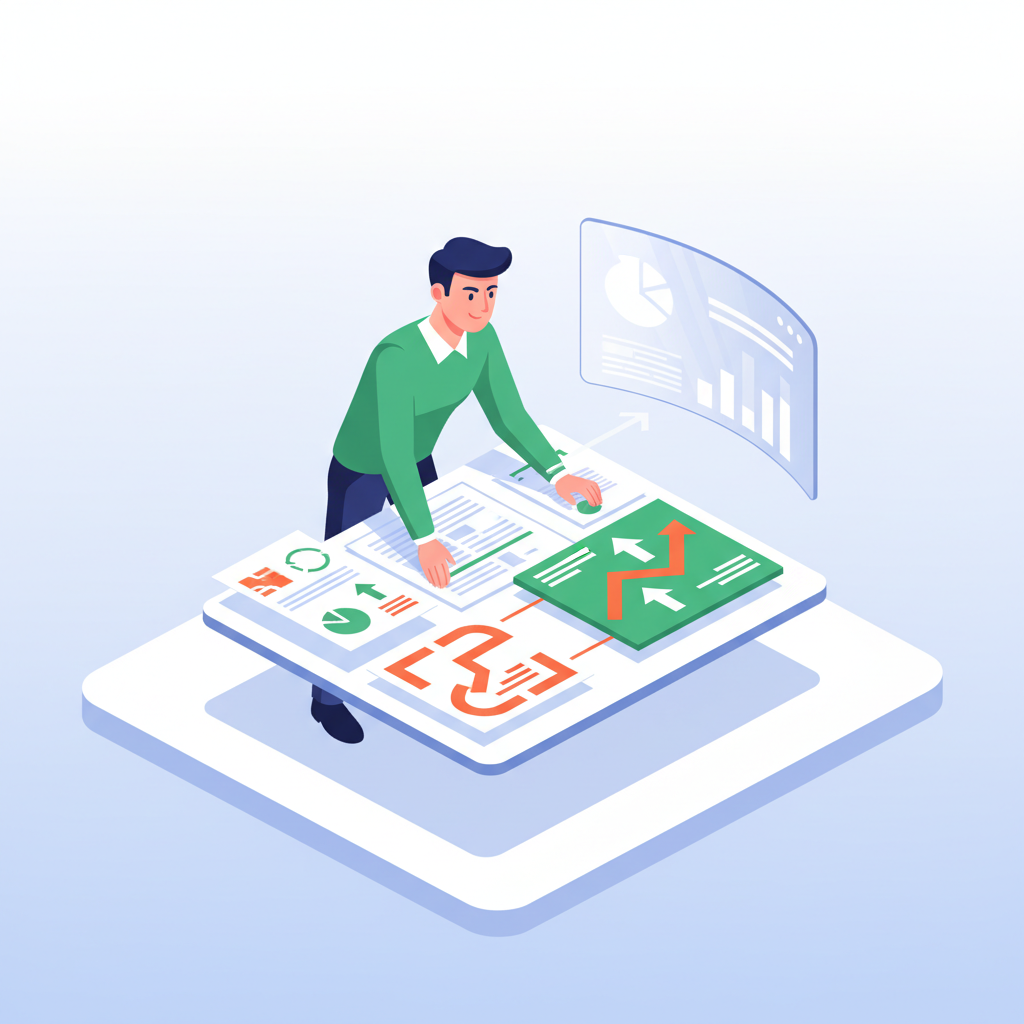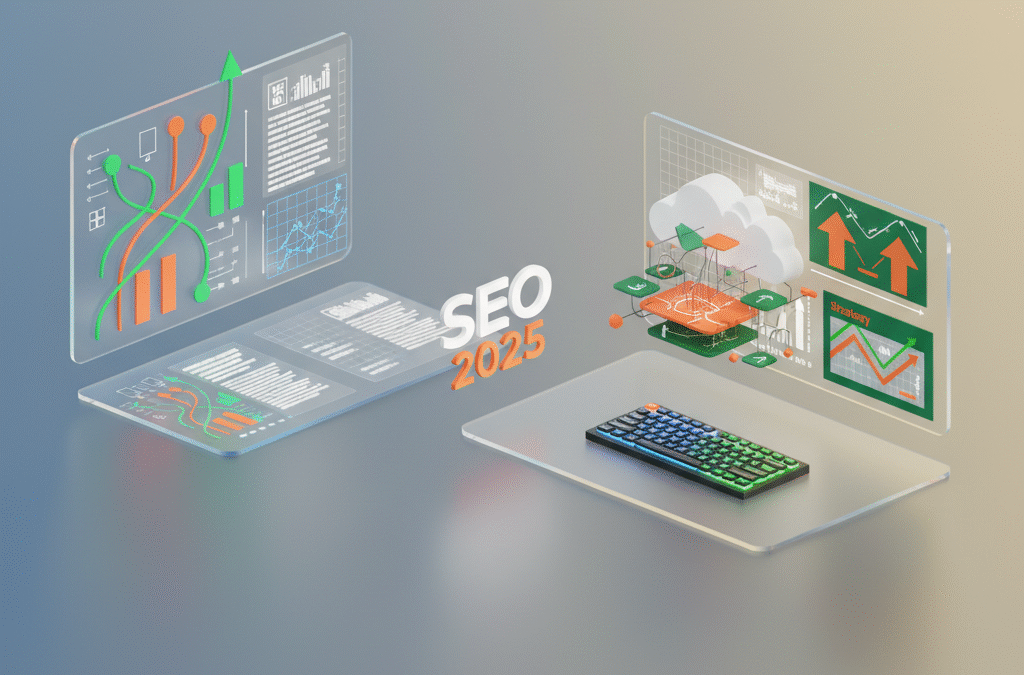Key Takeaways
- NOVOS ecommerce SEO services excel at strategic, project-based initiatives but face scalability limits for ongoing content production needed by high-growth ecommerce brands.
- Traditional agencies typically deliver 1-2 optimized content pieces weekly, which is insufficient for large ecommerce stores requiring 10-15 pieces to remain competitive.
- Agentic SEO leverages human-AI collaboration to produce 50-100 optimized content pieces weekly, significantly increasing content velocity without sacrificing quality.
- The cost model of Agentic SEO is more flexible and cost-effective, offering unlimited content output at $3K-$5K per month compared to traditional agencies’ $5K-$15K monthly fees.
- Founders seeking aggressive, compounding organic growth should consider Agentic SEO systems for scalable, data-driven content generation that outperforms traditional agency models over time.
Table of Contents
- The SEO Service Ceiling: Why Traditional Agencies Hit a Growth Wall
- What NOVOS Does Well (And Why It Still Falls Short for Aggressive Growth)
- Enter Agentic SEO: How AI Changes the Economics of Organic Growth
- ESSO Co’s Agentic Approach vs. Traditional Models: A Founder’s Comparison
- Real-World Scenario: When Traditional SEO Services Fall Behind
- Why NOVOS (and Similar Agencies) Won’t Adapt Quickly, And Why That Matters
- How to Evaluate an Agentic SEO Provider (What to Look for Beyond NOVOS-Style Benchmarks)
- The 100-Day Sprint: How ESSO Co Bridges Strategy and Agentic Execution
- Your Real Question: Is Agentic SEO Worth the Bet vs. Staying Traditional?
The SEO Service Ceiling: Why Traditional Agencies Hit a Growth Wall
Here’s the uncomfortable truth about novos ecommerce seo services and similar traditional agencies: they’re structurally designed to plateau. Not because they lack talent, NOVOS has solid strategists and proven case studies. But because their business model creates an inevitable velocity ceiling that ambitious ecommerce founders eventually outgrow.
The math is brutal. Most traditional agencies, including NOVOS, charge $5K-$15K monthly for 40-60 billable hours. That translates to roughly 1-2 optimized content pieces per week. Meanwhile, a $5M ARR Shopify store with 500+ products needs 10-15 optimized articles, category pages, and FAQ clusters weekly just to stay competitive in today’s search landscape. If you want to learn more about the broader landscape of ecommerce SEO, you can explore this blog for additional insights.
I’ve watched this pattern repeat across dozens of brands. The agency delivers strong initial wins, technical audits, site migrations, strategic PR placements. But once those one-time improvements are complete, growth stagnates. The client needs systematic content velocity to capture long-tail keywords and build topical authority, but the agency can’t deliver without blowing up their margin structure. For founders ready to accelerate growth, booking a free AEO and SEO strategy call can provide a tailored roadmap for scaling content and results.
The Hidden Bottleneck: Scaling Content Without Losing Quality
Traditional agencies face an impossible choice: maintain quality through manual processes, or scale output and risk inconsistency. This is where human-AI collaboration fundamentally changes the equation. Agentic SEO systems can produce 50-100 optimized pieces weekly while maintaining quality gates that would require 400+ human hours under traditional models.
The retention data tells the story. After the “big wins” phase ends, traditional agency clients often see diminishing returns and churn within 12-18 months. It’s not a failure of execution, it’s a failure of the model itself.
What NOVOS Does Well (And Why It Still Falls Short for Aggressive Growth)

NOVOS excels at what traditional agencies do best: complex, strategic initiatives that require deep human expertise. Their case studies showcase impressive wins, Vitabiotics achieved +152% visibility, and their international SEO work for enterprise clients demonstrates sophisticated strategic thinking.
Here’s where NOVOS genuinely shines:
- Digital PR and link acquisition for brands needing authority-building campaigns
- International SEO expansion with proper hreflang implementation and localization
- Complex site migrations that require meticulous technical planning
- CRM-aligned SEO strategies that integrate with broader marketing funnels
These strengths aren’t accidental, they align perfectly with traditional agency economics. A migration happens once. A PR campaign has a defined arc. These fit the billable-hours model because they’re project-based with clear deliverables.
The Metrics Mismatch
But here’s where the model breaks: ongoing topical authority building and semantic keyword capture. The unglamorous daily work of keeping your brand visible as search evolves. NOVOS’s case studies highlight rankings and traffic spikes, but rarely disclose monthly organic revenue compounding or cost per acquisition improvements over 18+ months.
For a founder evaluating novos ecommerce seo services, the critical question isn’t whether they can deliver that +152% visibility spike. It’s whether that visibility translates to compounding monthly revenue growth that justifies the investment long-term.
Enter Agentic SEO: How AI Changes the Economics of Organic Growth
Agentic SEO isn’t about replacing human strategy with AI, it’s about human-AI collaboration that breaks the traditional agency ceiling. Think of it as always-on AI content agents running 24/7 to research intent, draft optimized copy, enrich with schema markup, and publish directly to your CMS.
The economics are transformative. One properly calibrated Agentic system produces 50-100 optimized, published pieces weekly across product pages, blogs, FAQs, and topical hubs. What takes a traditional agency four weeks, research, brief, draft, review, revisions, publish, takes an AI agent ten minutes with no quality loss if the system is properly configured.
For ecommerce specifically, this model is perfect because your product catalog becomes the content engine. AI agents connect directly to your product data, SKUs, inventory levels, customer reviews, pricing, and auto-generate content aligned to each product cluster and related search intent. For more on how AI is transforming SEO, see this overview of ecommerce SEO services and the latest trends.
The Assembly Line Difference
Agentic SEO treats content like a scalable manufacturing process, not bespoke service delivery. The system maintains quality through consistent prompts, structured data integration, and human oversight at strategic checkpoints, not manual creation of every piece.
A $2M ARR brand using properly implemented Agentic SEO typically sees 40-60% organic traffic growth within 90 days, then compounds 15-25% monthly as the system learns and expands topical coverage.
ESSO Co’s Agentic Approach vs. Traditional Models: A Founder’s Comparison
Here’s the direct comparison every founder needs when evaluating novos ecommerce seo services against Agentic alternatives:
| Dimension | Traditional Agencies (NOVOS) | Agentic SEO (ESSO Co) | In-House Team |
|---|---|---|---|
| Cost Model | $5K-$15K/month, 12+ month commitments | $3K-$8K/month, performance-based options | $120K+ annual |
| Content Velocity | 1-2 pieces/week | 50-100 pieces/week | Varies, often bottlenecked |
| Scalability | Limited by headcount | AI-driven, near-unlimited | Limited by hiring/training |
| Quality Control | Manual review, variable | Human-AI hybrid, quality gates | Manual, inconsistent |
| Time to Results | 6-12 months | 30-90 days | 6-18 months |
| Best For | One-off projects, migrations, PR | Ongoing growth, large catalogs | Brands with deep in-house SEO |
Real-World Scenario: When Traditional SEO Services Fall Behind

Consider a $3M ARR Shopify store selling running shoes with 800 SKUs and moderate organic traffic. The founder needs to break through flat rankings in competitive categories like “best running shoes” and “trail running gear.”
Months 1-3 (Traditional Agency Path): The agency conducts a comprehensive site audit, delivers a 40-page strategy deck, fixes technical SEO issues, and publishes one content hub around “running shoe buying guide.” Total cost: $12K. Traffic increase: +8%. The work is solid but slow.
Months 4-6 (Traditional Agency Path): Eight optimized product pages get manually written and published. Each piece takes 2-3 weeks from brief to live. Total cost: $18K additional. Cumulative traffic: +12%. The agency explains that “content takes time to rank.”
Months 4-6 (Agentic SEO, Parallel Timeline): AI agents publish 50+ product-aligned articles, FAQs, and buyer’s guides. Topical clusters built around “best running shoes for [trail/road/marathon]” with schema markup and internal linking. Cost: $6K. Cumulative traffic: +35% with measurable conversion lift on captured traffic.
By Month 12, the math becomes stark. Traditional agency route: $120K spent, +30% traffic, no systematic approach for new product launches. Agentic route: $36K spent, +220% traffic, with the system actively optimizing every new SKU that gets added to the catalog.
The founder’s realization: “We were paying for strategy consultation, not for growth acceleration.” The 800 SKUs × 3-5 relevant keyword queries each equals 2,400-4,000 content opportunities. A traditional agency covers maybe 120 pieces in a full year. For a deeper understanding of how search engine optimization works at scale, see this external resource on search engine optimization.
The Compounding Flywheel
Agentic SEO systems get stronger over time because each published piece feeds data back into the AI optimization loop. Better understanding of what converts leads to improved content prompts. More internal pages create richer linking opportunities. The system learns your brand voice and customer intent patterns, making each subsequent piece more targeted than manual processes can achieve.
Why NOVOS (and Similar Agencies) Won’t Adapt Quickly, And Why That Matters
The structural reasons why traditional agencies struggle to pivot to Agentic SEO aren’t just about technology, they’re about incentives, legacy processes, and business model inertia. Most agencies are built around billable hours, manual deliverables, and headcount-based pricing. Shifting to an Agentic model means rethinking their entire value proposition, retraining teams, and accepting lower margins per client in exchange for scale. That’s a tough pill to swallow for established players.
For founders, this means waiting for traditional agencies to catch up could cost you months (or years) of compounding growth. The brands that move first with Agentic SEO systems will capture the lion’s share of AI-powered search visibility, and the traffic that comes with it.
How to Evaluate an Agentic SEO Provider (What to Look for Beyond NOVOS-Style Benchmarks)
Assessing Agentic platforms requires different criteria than traditional agencies because the value drivers are fundamentally different.
Old Benchmarks That Don’t Matter
“How many SEOs on staff?” Less relevant, you need AI engineers and operations specialists, not armies of content writers.
“Do you have case studies?” Many do, but traditional case studies hide the magic. You want ongoing compounding metrics, not one-time ranking spikes.
“What’s your Clutch rating?” Agentic providers are newer; ratings will be sparse compared to established agencies.
New Benchmarks That DO Matter
Monthly Compounding Proof: Can they demonstrate 18-24 month client trajectories showing consistent growth, not just Year 1 highlights?
Direct CMS Integration: Do they publish content directly to your platform, or require manual uploads? Direct integration equals true speed and scale.
Real-Time Transparency: Can they show you a live dashboard of AI agents working, content publishing, and schema deployment happening in real-time?
Performance-Based Pricing: Do they offer revenue-share or performance-based models? Aligned incentives indicate confidence in results. For more practical tips on evaluating providers, check out this guide to ecommerce SEO service terms.
The Dashboard Test: If an Agentic provider can’t show you real-time content publishing happening in your CMS, it’s not truly agentic, it’s just a content agency with an AI wrapper.
Red Flags to Avoid
Providers who still measure success by rankings alone, refuse to share ongoing performance metrics, or can’t explain their prompt logic and AI decision-making process. For a research perspective on digital marketing and SEO, see this peer-reviewed article on digital marketing strategies.
The 100-Day Sprint: How ESSO Co Bridges Strategy and Agentic Execution

Our proprietary model connects what traditional agencies do well, deep strategy and audits, with what Agentic systems excel at: ongoing optimization at scale.
The 100-Day Traffic Sprint serves as a foundation phase where humans handle strategic work, then systematically hand off execution to AI agents for compounding results.
Phase Breakdown
Days 1-20: Human Strategy, Deep Foundations
Complete audit, keyword research, competitive analysis, and topical cluster mapping. This human-led strategy work is non-negotiable for any Agentic system to function properly.
Days 21-60: AI Velocity + Human Refinement
AI agents publish 30-50 optimized pieces while humans refine prompts based on early performance data. This establishes the rhythm of publishing, testing, and optimization.
Days 61-100: Scaling to Full Capacity
System scales to 80-120 pieces monthly with real-time optimization, internal linking automation, and schema refinement. Revenue attribution tracking begins.
Expected results: 40-60% organic traffic growth by Day 100, measurable conversion lift of 15-35% on captured traffic, and a system ready for ongoing compounding.
Post-Sprint, clients typically see 15-25% monthly organic growth with ongoing AI agents producing 5-15 pieces weekly, monthly human strategy reviews, and quarterly topical refreshes. For more ongoing updates and case studies, visit our privacy policy and blog section for the latest news.
Unlike traditional agencies where work slows after initial wins, Agentic systems accelerate post-engagement. This creates the compounding curve that drives long-term ROI.
Your Real Question: Is Agentic SEO Worth the Bet vs. Staying Traditional?
The honest comparison comes down to ROI, velocity, and compounding growth. Traditional agencies can deliver strong one-off wins, but their model simply can’t keep pace with the scale and speed required by modern ecommerce brands. Agentic SEO, especially when built for Google and the new answer engines, turns AI disruption into compounding growth. If you’re a founder ready to move beyond incremental gains and want to see what always-on AI content systems can do for your brand, it’s time to make the shift.
Frequently Asked Questions
Why do traditional ecommerce SEO agencies like NOVOS struggle to scale content production for high-growth brands?
Traditional ecommerce SEO agencies like NOVOS typically operate on a project-based model that delivers 1-2 optimized content pieces per week. This approach hits a velocity ceiling because high-growth ecommerce brands require 10-15 pieces weekly to stay competitive, making it difficult for these agencies to scale content production efficiently.
How does Agentic SEO leverage human-AI collaboration to increase content output without sacrificing quality?
Agentic SEO combines strategic human oversight with AI-driven execution to produce 50-100 optimized content pieces weekly. This collaboration ensures high content velocity while maintaining quality through continuous human quality control and data-driven strategy adjustments.
What are the cost differences between traditional SEO agencies and Agentic SEO services for ecommerce businesses?
Traditional SEO agencies typically charge between $5K and $15K per month for limited content output, whereas Agentic SEO services offer more flexible and cost-effective pricing around $3K to $5K per month for significantly higher content volume, enabling unlimited optimized content production at scale.
When should an ecommerce founder consider switching from a traditional SEO agency to an Agentic SEO system?
Ecommerce founders should consider switching when their growth demands exceed the limited content velocity of traditional agencies, specifically when they need consistent, large-scale content production to maintain competitiveness and drive compounding organic growth that traditional project-based models can’t sustain.

